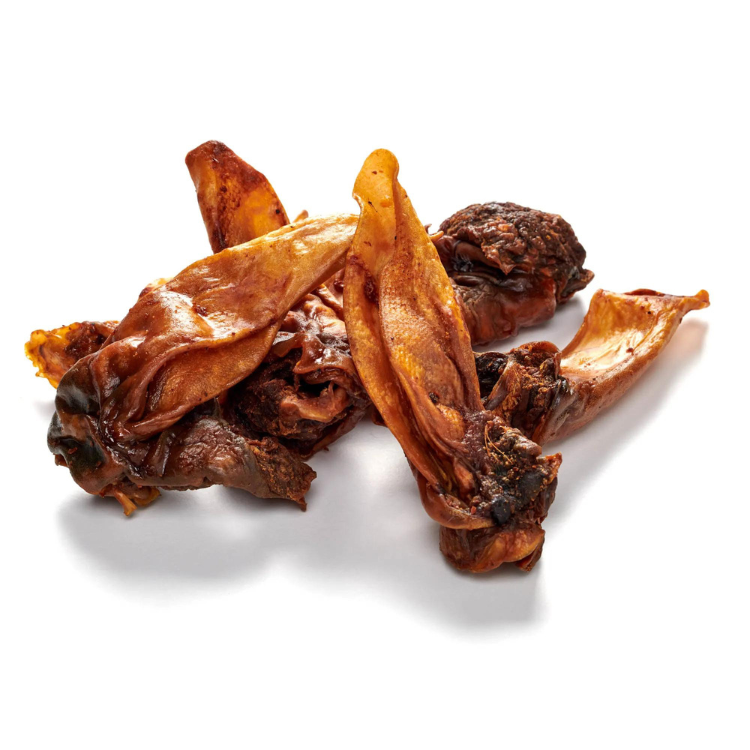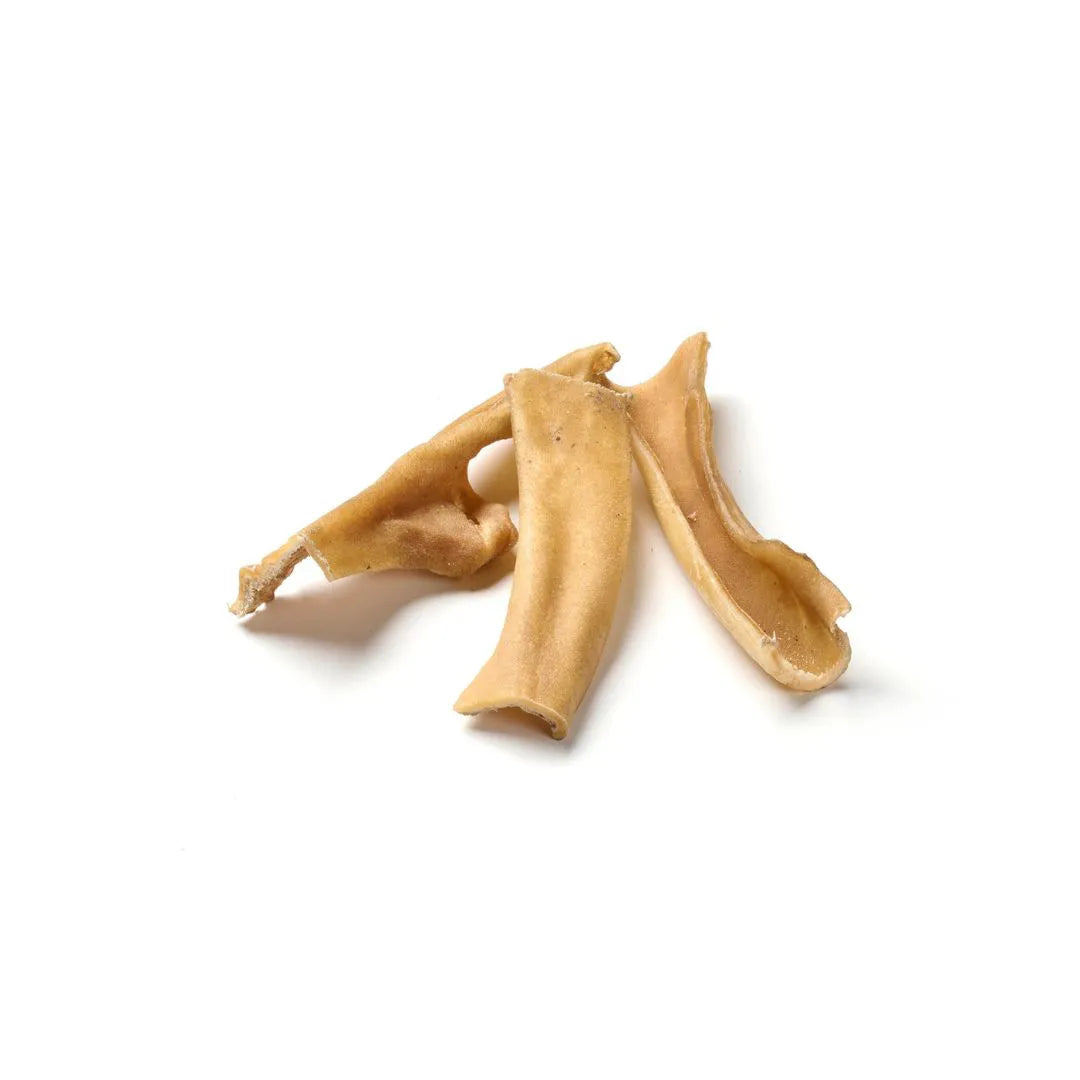
Castration and sterilization in dogs
Share
In the world of dog ownership, there is hardly a topic that evokes as many emotions and opinions as the question of castration or sterilization. It is a topic that has a profound impact on the relationship between humans and animals, and yet it is a decision that many dog owners have to make at some point.
Contents: Castration and sterilization in dogs - A comprehensive guide
- Difference between castration and sterilization
- Advantages of castration
- Benefits of sterilization
- Disadvantages and risks
- When is the best time for castration or sterilization?
- Recovery phase after the procedure
- Frequently asked questions and misunderstandings
- Conclusion
But which way is the right one? What is the difference between castration and sterilization? Both methods have their advantages and challenges and both play an important role in modern veterinary medicine. This topic is as complex as the dogs it affects. Every breed, every age and every individual personality brings its own aspects to the decision.
High-quality dog chews for your faithful companion can be found here!
Difference between castration and sterilization
Castration and sterilization are two different procedures that affect the reproductive system. However, sterilization is more commonly performed in humans - vasectomy for men and tubal ligation for women - because these methods are less invasive and do not have extensive hormonal effects, unlike castration, which is mostly performed for medical reasons only.
While both methods result in infertility, they differ in their approaches and effects on the dog's hormonal balance and behavior. Castration involves the complete removal of the dog's reproductive organs. In male dogs, this means the removal of the testicles, and in female dogs, the removal of the ovaries and often the uterus. This procedure leads to complete infertility and prevents the production of sex hormones such as testosterone and estrogen.
Sterilization, on the other hand, only involves cutting or tying off the reproductive tract. In male dogs, the sperm ducts are cut, and in female dogs, the fallopian tubes. This method prevents reproduction without affecting the production of sex hormones.
The hormonal and behavioral differences between castration and sterilization are an important aspect for dog owners to consider. By removing the reproductive organs, the production of sex hormones such as testosterone and estrogen is stopped. This can lead to behavioral changes such as a reduction in marking behavior in male dogs and a reduction in heat cycles in female dogs.
Hormone-related aggression and wandering can also be reduced. Since the reproductive organs remain intact during sterilization, hormone production is also maintained. This means that hormonal behaviors such as marking, heat and wandering can continue. The main advantage of sterilization is that it prevents unwanted reproduction without interfering with the hormonal balance.
Such procedures are usually performed after physical development is complete. This is to ensure that the organism is fully mature, which brings health benefits. In dogs, this often means that castration or sterilization is performed at around 6 to 12 months of age, depending on the breed and individual development. It is important to discuss the optimal time for the procedure with a veterinarian to achieve the best health results.
Advantages of castration
Neutering brings numerous health and behavioral benefits that can significantly improve your dog's life:
Reduced risk of prostate cancer and testicular diseases in male dogs:
Removing the testicles can prevent testicular diseases, including tumors, and also reduces the risk of perianal tumors (tumors in the area around the anus) and hernias (hernias or bulging of organs through a weak spot in the abdominal wall).
Significant health benefits for bitches:
Removal of the ovaries and often the uterus virtually eliminates the risk of uterine and ovarian cancer.
- Castration almost completely eliminates the risk of pyometra (a serious and life-threatening uterine infection caused by a collection of pus in the uterus).
- The risk of mammary tumors (mammary gland tumors) is significantly reduced by early castration. Studies have shown that bitches that are spayed before their first heat (oestrus cycle) have a significantly lower risk of developing malignant mammary tumors, which contributes to a significantly higher life expectancy and better general health.
Positive behavioral changes:
After castration, bitches no longer go into heat, which makes caring for and keeping them much easier. Hormone-related behavioral problems such as aggression or restlessness can also be reduced.
Benefits of sterilization
Sterilization also offers some benefits, particularly when it comes to preserving your dog's natural behaviors and hormone levels. Sterilization leaves the reproductive organs intact, meaning hormone production remains unchanged. This means that hormonal behaviors such as marking, heat, and roaming can continue.
This is beneficial for many dog owners who want to preserve their animals' natural instincts and behaviors. This can be especially important for owners of working dogs who rely on their animals' natural energy and behavior.
Important benefits of sterilization include:
- Maintaining natural hormone production: Hormonal behaviors such as marking and heat remain, thus maintaining natural instincts and behaviors.
- Reduced risk of metabolic diseases: Since hormone production is not disrupted, the risk of metabolic diseases that can occur in neutered animals remains lower.
- Less invasive method: The procedure is less invasive than castration because no organs are removed.
These benefits of sterilization help ensure that dogs can be kept in a natural state, which can be beneficial for their health. For dog owners who want to preserve their animals' natural behaviors and hormone levels, sterilization offers a valuable alternative to castration. It ensures that dogs can continue to display their natural energy and behavior patterns while preventing unwanted reproduction.
Pamper your dog with our delicious chews!
Disadvantages and risks
Both castration and sterilization carry potential disadvantages and risks that must be considered.
castration
Castration carries the risk of post-operative complications such as infections or bleeding. In addition, the removal of the reproductive organs can lead to weight gain as the dog's metabolism changes. This requires an adjustment of the diet and regular exercise to prevent obesity. There is also evidence that neutered dogs may have an increased risk of certain types of cancer and joint diseases.
Important points regarding castration:
- Risk of postoperative complications: Infections or bleeding may occur.
- Weight gain: The altered metabolism can lead to weight gain.
- Increased risk of certain diseases: Neutered dogs may have a higher risk of certain cancers (such as lymphomas and hemangiosarcomas) and joint diseases (such as hip dysplasia and cruciate ligament ruptures).
- Behavioral changes: In addition to positive changes, negative behavioral changes , such as increased anxiety or aggressiveness, can also occur.
- Urinary incontinence: Incontinence can occur after castration, especially in female dogs.
Castration of dogs therefore involves considerable risks and disadvantages. Post-operative complications, weight gain, an increased risk of certain diseases and possible negative behavioral changes are aspects that should definitely be considered before your dog's life is changed so drastically. Castration should therefore be carefully considered and - in any case - only carried out on the urgent recommendation of a veterinarian!
sterilization
In comparison, sterilization still carries the risk of hormone-related diseases such as pyometra (a serious and life-threatening infection of the uterus) or hormone-related tumors because the reproductive organs remain intact. In addition, hormonal behaviors remain, which may be undesirable for some owners.
Important points for sterilization: Risk of hormone-related diseases: Diseases such as pyometra or tumors can still occur. Hormonal behaviors: Behaviors such as marking, heat, and roaming persist, which may be undesirable for some owners.
It is important to carefully weigh these risks and disadvantages and discuss them with a veterinarian to make the best decision for the individual dog.
When is the best time for castration or sterilization?
The best time to spay or neuter can depend on several factors, including your dog's age, breed, and overall health. Some veterinarians recommend spaying or neutering before the age of one year to reduce the risk of hormone-related diseases. This can reduce the risk of mammary tumors, especially in female dogs.
Other veterinarians prefer to wait until the dog is fully physically mature, especially in large breeds. This can help reduce the risk of joint problems and other developmental conditions. It is important to follow your veterinarian's advice and consider your dog's individual needs to determine the best time to perform the procedure.
Recovery phase after the procedure
When we humans have had such a medical procedure, we usually do rehabilitation. Unfortunately, this is not usually available for dogs. Nevertheless, the recovery time after castration or sterilization is particularly important. Your dog needs a lot of rest, a stress-free environment and a lot of care in order to recover well.
Limit his activity and avoid strenuous exercise, just as is recommended for humans after surgery. Keep the surgical wound clean and dry to avoid infection. Check regularly for signs of redness, swelling, or discharge. If anything unusual occurs, contact your veterinarian immediately.
Infection and post-operative bleeding are the most common complications, so it's important to be alert and act quickly if you see any signs of trouble. By providing careful care and monitoring, you can help your dog recover quickly and without any problems.
Frequently asked questions and misunderstandings
There are many questions and misconceptions surrounding spaying and neutering in dogs. A common misconception is that spaying makes dogs lazy. In fact, neutered dogs are more prone to weight gain, but with a balanced diet and regular exercise, this can be effectively managed; laziness is not a direct result of spaying.
Another common misconception is that spaying and neutering are similarly invasive. In truth, spaying is less invasive as it simply prevents reproductive function by cutting the fallopian tubes in female dogs or the vas deferens in male dogs without removing the reproductive organs. This may involve fewer risks and a quicker recovery time compared to spaying, which involves removing the reproductive organs.
The decision between spaying and neutering should be made based on the dog's individual needs. It is important to separate myths from facts in order to make an informed decision.
Conclusion
Deciding whether to spay or neuter - or have no surgery at all - is complex and requires careful consideration of the pros and cons. By understanding the differences, benefits and potential risks, you can make an informed choice for your dog's well-being.
We would like to stress that as an online shop we can only provide initial guidance. Our information is intended to help you understand the basic differences and possible effects of the procedures. However, it is essential that you seek advice from a veterinarian. A veterinarian can perform a comprehensive examination of your dog and give you specific recommendations based on your animal's individual needs and health condition.
The health and wellbeing of your dog is very important to us, so we strongly recommend discussing any questions or concerns with a veterinarian. Only a qualified professional can provide you with sound advice and ensure you fully understand all aspects of spaying and neutering and the need for such a procedure.
Pamper your dog with our delicious chews!












